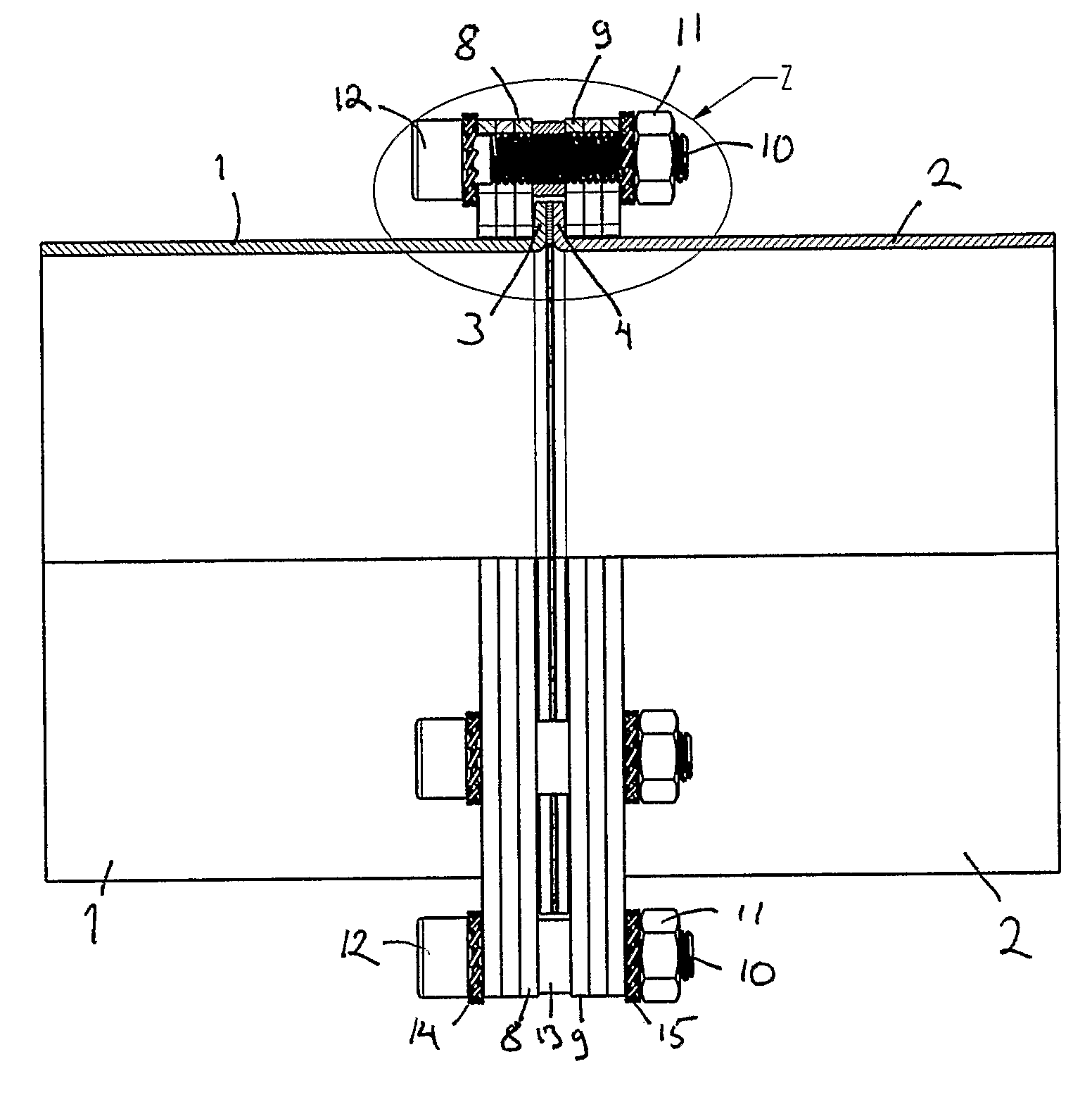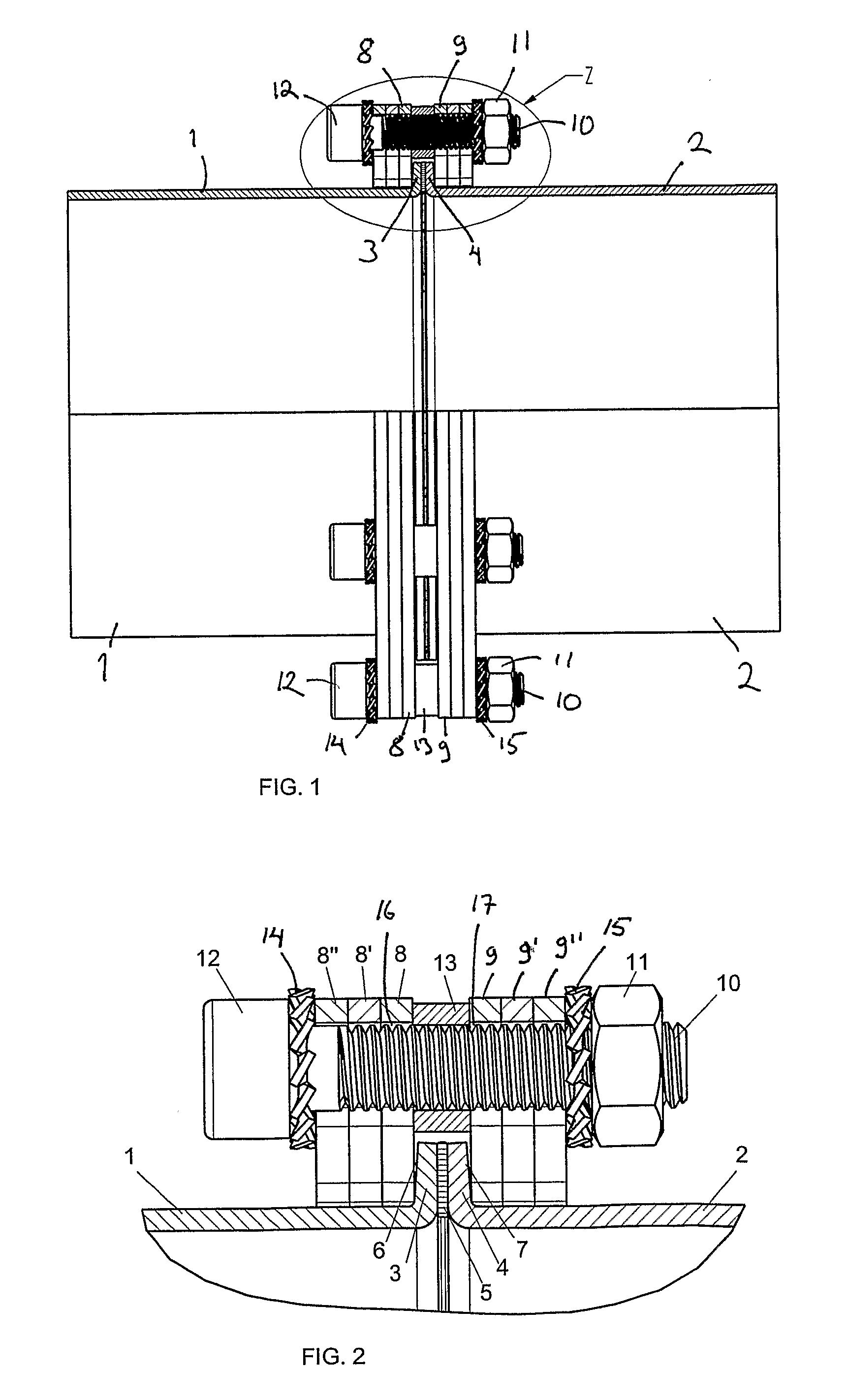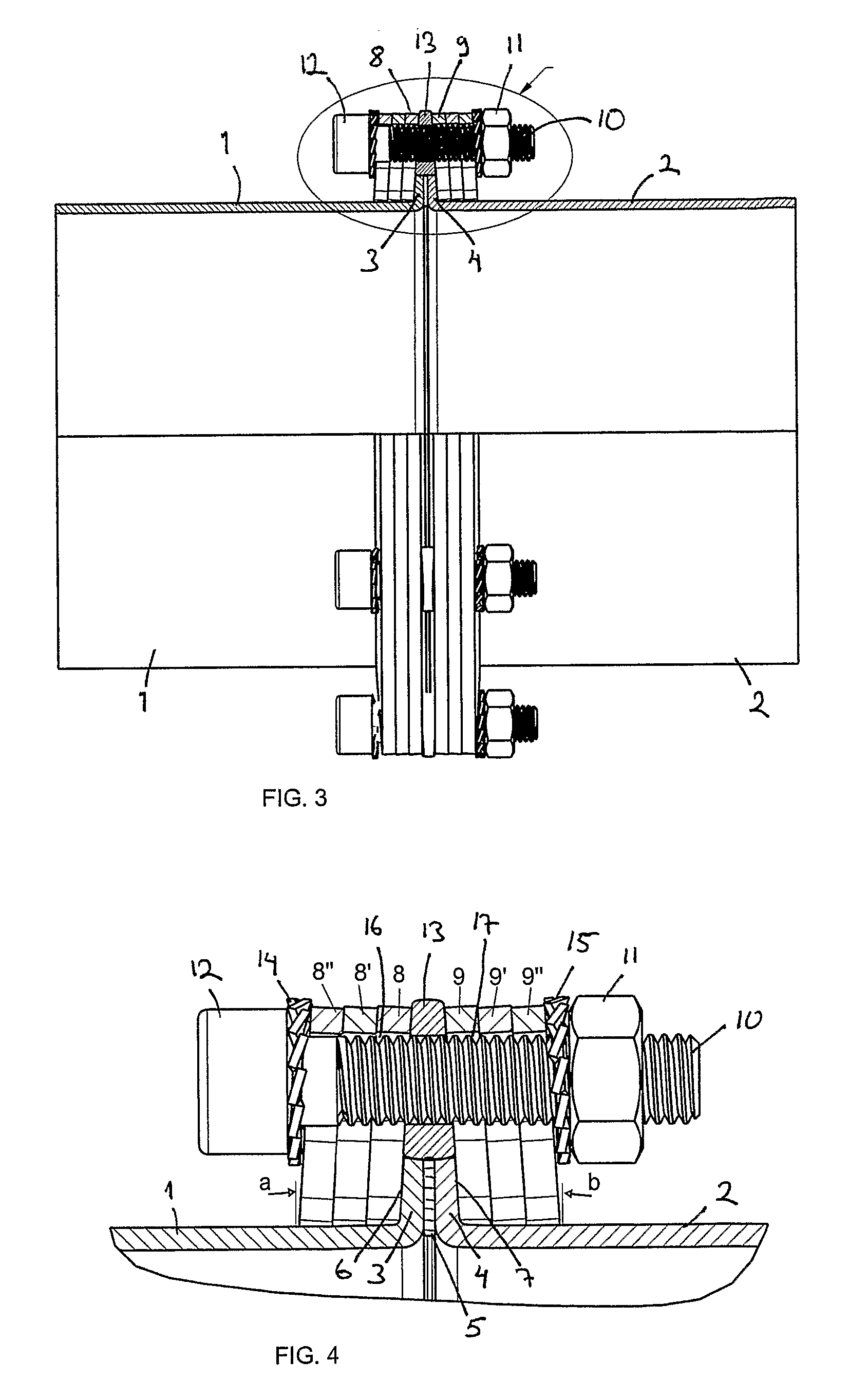Pipe Joint
a pipe joint and pipe technology, applied in the direction of sleeve/socket joints, joints with sealing surfaces, fluid pressure sealed joints, etc., to achieve the effect of adaptability of the flange part, improving and accelerating the assembly of the pipe joint, and solving the problem of pipe joints that cannot be formed by hand
- Summary
- Abstract
- Description
- Claims
- Application Information
AI Technical Summary
Benefits of technology
Problems solved by technology
Method used
Image
Examples
Embodiment Construction
[0022]FIGS. 1 and 2 present a pipe joint according to the invention before the tightening of the joint. FIGS. 3 and 4 show the joint of FIGS. 1 and 2 when tightened.
[0023] There are numerous ways of forming a collar at the end of a pipe section. Some of these are described in publication GB 2202022 A, among others. Naturally, the collar can also be formed in other ways, even by welding. The figure shows a collar type in which the back surface of the collar, i.e. the surface against which the flange part will be placed, is somewhat slanting.
[0024] In the pipe joint, pipe sections 1 and 2 are joined together by means of a flange joint by pressing the pipe sections together end to end by collars 3, 4 formed at the ends of the pipe sections. Arranged between the joint surfaces of the collars is preferably a sealing element 5. The pipe sections 1, 2 are pressed against each other by means of flange parts 8, 9 on the side facing away from the joint surfaces of the collars, i.e. by the b...
PUM
 Login to View More
Login to View More Abstract
Description
Claims
Application Information
 Login to View More
Login to View More - R&D
- Intellectual Property
- Life Sciences
- Materials
- Tech Scout
- Unparalleled Data Quality
- Higher Quality Content
- 60% Fewer Hallucinations
Browse by: Latest US Patents, China's latest patents, Technical Efficacy Thesaurus, Application Domain, Technology Topic, Popular Technical Reports.
© 2025 PatSnap. All rights reserved.Legal|Privacy policy|Modern Slavery Act Transparency Statement|Sitemap|About US| Contact US: help@patsnap.com



